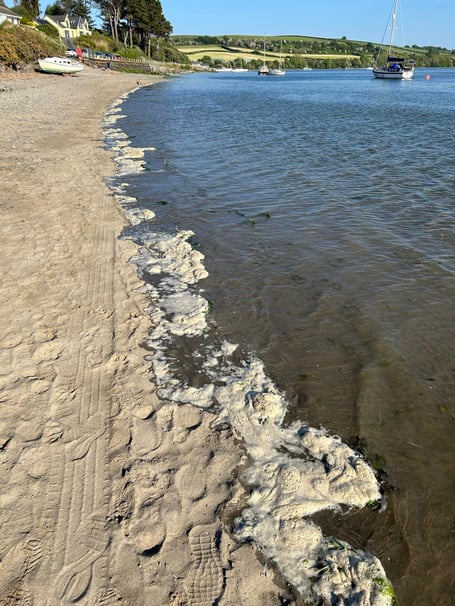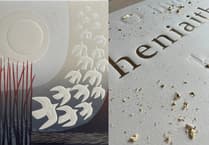Experts have addressed fears over foul-smelling brown discolouration and froth in seawater along Cardigan Bay.
Residents from Tywyn down as far as Cardigan have complained about what Natural Resources Wales (NRW) has described as marine algal bloom.
Fears were raised after parents reported children getting rashes and some swimmers said they had fallen ill.
Some residents are warning others to stay away from the beach or close their mouths when swimming.
One beachgoer from Tywyn said: “Someone needs to find out what that vile smell from the sea and the discolouration in the water is.”
Another added: “The stuff we saw, which was quite close to shore, was more brown than green and we thought it smelt more like effluent.”
But NRW said the foam is merely due to non-toxic algal blooms which usually start to increase in spring and then they grow rapidly in the summer as temperatures rise.
A spokesperson for NRW said: “Water samples have confirmed the presence of Phaeocystis algal blooms along the coast at locations between Aberdyfi and Harlech.
“These non-toxic blooms form a brown, frothy scum on the water and when breaking down can smell like sewage.
“We will continue to monitor the situation.
“Members of the public are encouraged to contact our 24-hour incident line on 03000 65 3000 if they see an environment or pollution incident.”
But not all algal blooms are non-toxic, and Cardigan resident and environmental campaigner Piers Partridge said the public should be able to test any suspicious substances.
He added: "Bloom should be tested in designated swimming waters to check whether it has a dangerous level of toxicity or not. And then warnings can be posted on the relevant board.
“So, we need testing and a noticeboard. I know of several local swimmers who have become unwell after swimming - to have been warned would have saved them a lot of discomfort and time off work.”
Another said: “I do think more algae bloom is being caused due to high phosphates in the river which is unnaturally occurring due to sewage works and agricultural runoff.
“It doesn’t look nice and it’s not harmful to people, but I do think it’s harmful to wildlife when at large scale as takes oxygen out of water.”
But in Tywyn, residents seemed unconvinced by the explanation from NRW, instead expressing fears about sewage overflows due to the town's wastewater facility being forced to process extra effluent from a Dolgellau plant which requires ‘essential maintenance’, Dwr Cymru told the Cambrian News last week.
It has resulted in at least four ‘stinking’ lorries transporting sewage from Dolgellau through the town every day – although residents claim it is many more than this.
One Tywyn resident David Melia contacted the Cambrian News to complain about a brown stain along the sea front from the sewage pumping station to the effluence pipe.
An Aberdovey resident added: “I don't buy the algae thing. We know Gwynedd is the second-highest polluter of seas and rivers with sewage in the UK.
“We know that four tankers of sewage a day are being added to the Tywyn treatment works, being treated with disinfectant and then 'released safely back into the environment' - likely into the sea.
“We know that when there is heavy rain untreated sewage gets released into the sea. If the sea then looks like it has a lot of brown sewage and chemicals in it, I suspect it isn't algae."
Another resident linked it to Gwynedd council’s decision not to apply for Blue Flag status, a prestigious environmental award, for its beaches this year.
Pollution campaign group Surfers Against Sewage has posted no water quality alerts in the area on its interactive maps.
The Environment Agency website states: "Throughout the summer months, large blooms of Phaeocystis: a common, non-toxic algae, form in British coastal waters when the temperatures are warmer and there’s more sunlight.
"Algal blooms are a natural part of water ecology and when they accumulate, more so in early summer, they produce clouds of frog-spawn like colonies which look a little like oil drops in the water.
"However, it’s when they start to breakdown, that their appearance, and smell, may be mistaken for sewage. Creamy-brown foam can appear on the water’s surface and if near cliffs or headlands, the foam may look like thin layers or lines due to the waves.
"In exceptional cases the blooms can form thick blankets alongside the shoreline.
"When you get a large bloom breaking down, it can give off the smell of rotten eggs or vegetables. A smell also given off by decomposing seaweed."
Have you encountered any foul-smelling froth or discolouration? Have you become unwell after swimming in the sea recently? Email [email protected] if so.





Comments
This article has no comments yet. Be the first to leave a comment.